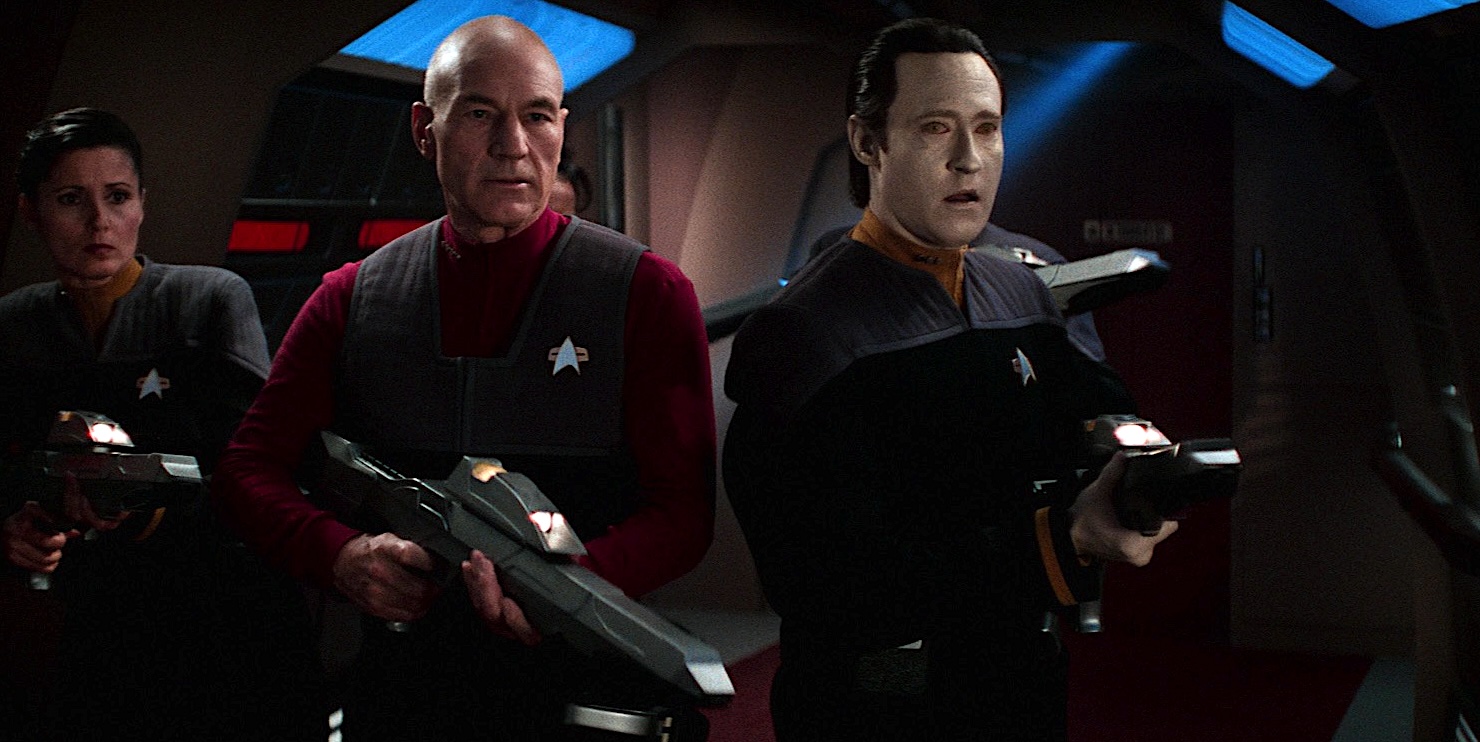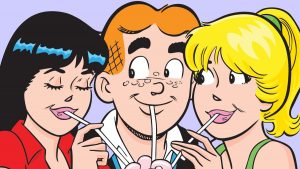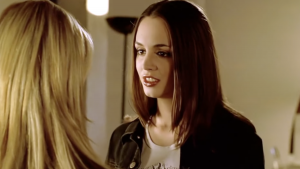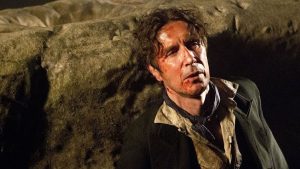
“It’s like being inside joy.” That’s how Guinan (Whoopi Goldberg) describes the experience of entering the Nexus, the strange phenomenon that drives the plot in Star Trek: Generations. When one enters the Nexus, their deepest desires, their deepest needs, come to life. Which is why the scientist Dr. Soran (Malcolm McDowell) will do anything he can to get back to it after he’s ripped away during a Starfleet rescue mission.
The Nexus provides more or less what you’d expect for William Shatner’s James T. Kirk, including a ranch with horses, the promise of adventure around the corner, and a (probably) beautiful woman calling for him. Sure, the Enterprise and/or Spock is Kirk’s true greatest love, but this depiction works too.
Yet by contrast, the Nexus dream given to our beloved, cerebral Jean-Luc Picard (Patrick Stewart) is shocking in its incongruity. Picard pulls off a blindfold to find himself in the middle of a Dickensian Christmas, surrounded not only by his nephew René, who we are told died in a fire at the beginning of the movie, but also his children and wife, a redhead who somehow isn’t Beverly Crusher. Picard bathes in the warm glow of contentment, safe at home with his young children, a desire so strong that it takes prodding from Guinan to overcome it and escape the Nexus.
Star Trek: Generations may have a script from Ronald D. Moore and Brannon Braga, who also share a “story by” credit with Rick Berman, but the movie’s depiction of Picard seems very different from the character in the television show that trio shepherded. In Star Trek: The Next Generation that same writing team presented Captain Picard as a tireless explorer, whose wanderlust resulted in friction with his brother, and who explicitly disliked children, at least for the first few seasons.
Sadly, Star Trek: Generations was just the first of many revisions to Picard, starting a transformation over four movies that would turn him into a far more boring character.
The Passion of Picard
According to the TNG series bible, Jean-Luc Picard “deserves the description ‘distinguished’ despite being in his youthful fifties.” He has an “unspoken but deep father-son relationship” with Riker. Against the more virile and swashbuckling Kirk, Picard was a diplomat who commanded with a powerful voice. Even as late as season 5, and the only thing that shook Picard was getting stuck in an elevator with a bunch of kids.
The final TNG movie Star Trek: Nemesis takes advantage of Picard’s august quality, at least in his first scene of the movie. After an opening sequence depicting an attack on the Romulan senate, we see Picard deliver a pitch-perfect toast to newlyweds Riker (Jonathan Frakes) and Troi (Marina Sirtis), a speech full of humor and boldness—everything great about the character.
Six minutes later, Picard bursts from a runabout in a space dune-buggy to do some off-ship off-roadin’! Yee-haw! By his own admission, the dune buggy scene appeared in Nemesis because Patrick Stewart wanted it there. Thanks to his position as executive producer on the TNG movies, Stewart gained a stronger hand in crafting Picard. One wouldn’t think that much of a problem, as Stewart played the character for seven years before Generations. But Stewart saw Picard less as the type of guy who recites poetry to befuddle the Ferengi and more as a guy with ripped biceps and a rifle in his hands.
For all that Star Trek: First Contact does right, delving into the trauma that still lingers after his assimilation by the Borg in the classic two-parter “The Best of Both Worlds,” the one classic TNG movie still imagines Picard as an action hero. The script by Moore and Braga reserves the film’s sole one-liner for Worf (“assimilate this!”), but the screenplay still features a sequence in which Picard charges into a battle and leads his crew into a firefight.
The most outrageous bit might be in Star Trek: Insurrection, though, where Picard and his crew rebel against Starfleet to defend a planet that holds the secret to eternal youth. Like the rest of the crew investigating the planet, Picard feels those rejuvenating effects, so his spryness works on a plot level. And let’s be honest, it’s kind of wonderful watching Stewart dance a little mambo while wearing a deep-v shirt.
Yet given Stewart’s insistence on remaking Picard, the fountain of youth plot feels less like part of a new civilization sought by the Enterprise and more an excuse for a movie star to show off. It completes Picard’s devolution from thoughtful dignitary, a man who wins battles through the force of a better argument and inspiring his crew, to a also-ran action star.
A Failing Frontier
After leaving his holiday home in Generations, Picard finds another resident of the Nexus, Captain Kirk. Generations, of course, exists as a hand-off between Kirk and Picard, with the former getting one last hurrah (at least until William Shatner brings him back in an insanely wonderful series of books) and entrusting the latter with the legacy of the Enterprise.
However, Generations also works as a turning point for Star Trek movies in general. It’s not just that Generations follows the sublime Star Trek VI: The Undiscovered Country, an incredible send-off for the original crew and one last trenchant Cold War analogy. It’s that the Trek movies lost their purpose after Kirk left the bridge.
Going all the way back to The Motion Picture, the first set of Star Trek movies were about Kirk and company getting old and losing their way. Each film dealt with the tension of the crew dealing with past regrets (Khan, war with the Klingons) and trying to figure out how to exist in a new world. The pathos cut Shatner’s bluster and made him pure charm, even as he disguised his aging with a toupee and a girdle, and green screen shots of free-soloing El Capitan.
The TNG movies failed to learn that lesson. Every time Picard dealt with a problem of the past, whether it be the Borg assimilation or a Romulan clone in the form of Tom Hardy, he responded with punching. The movies stripped Picard of his ability to reason, reducing him to a thug, something that doesn’t entirely go away until his rehabilitation in the third season of Star Trek: Picard.
It wasn’t until Picard was back with Number One that he regained his dignity, the strength to admit his mistakes to Ro Laren, to listen to Captain Shaw recount the horrors of Wolf 359, and to actually become a proper father to Jack Crusher. It was a television series, not a movie, that finally brought fans back to the pure joy of watching Captain Jean-Luc Picard at his best.
The post The Star Trek Movies Kind of Ruined Jean-Luc Picard appeared first on Den of Geek.









